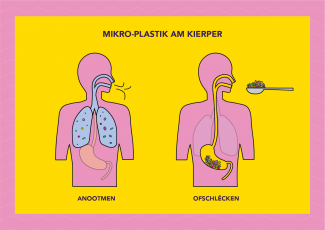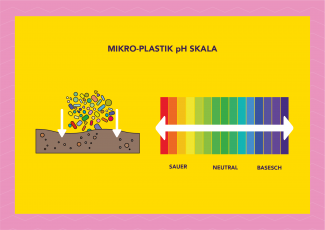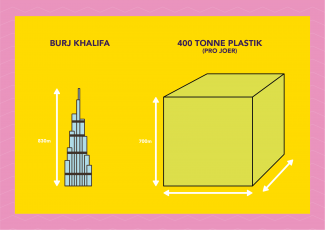"Ziel mir keng!" comes after the PISA Wëssensmagazin on Sunday evevnings on RTL Television. You can also watch the episodes on RTL Play and on our science.lu Youtube Channel: https://www.youtube.com/user/scienceluxembourg
Microplastics are tiny plastic particles or fibres less than 5mm in size and often remnants of plastic from our everyday lives. And you can find them almost anywhere, sometimes in large quantities.
Researchers have found microplastics not only in the oceans and the animals that live in them, but everywhere they have looked: in rivers, in the soil, in the air, in the snow in the Alps, and even in Antarctica.
And they also enter our bodies through the environment. We breathe them in and swallow them.

Yes, microplastics have also been found in some foods, including beer bottles. But is that a bad thing? We have looked into the research to find out what we already know about the effects of microplastics – and what not.
Let's take an extreme example: If you prepare milk for a newborn in a baby bottle made of a certain type of plastic in accordance with WHO recommendations, the baby can ingest an average of 1.6 million of these tiny plastic particles per day. That would be a lot, but the researchers do not yet know whether that is also an issue.
Now, while microplastics from baby bottles can be avoided, microplastics in general cannot. Whether microplastics pose a risk to our health depends on many factors.
e.g. the chemical composition of the microplastics – i.e. what kind of plastic it is, or whether it also contains harmful additives. Like, for example, the plasticiser BPA (Bisphenol A), which controls hormone balance.
Or what shape or size the microplastics are. Because that determines what happens to it in the body. When they are as big as grains of sand, they – like sand cake – are excreted from the body again.
But if they are smaller, they can pass through the intestinal wall and be absorbed by tissues and cells.. And then potentially cause harm.
Researchers think that the majority of microplastics we ingest are excreted again – whether through the intestines or mucus in the respiratory tract.
Last year, however, microplastics were also found in the blood of 17 out of 22 participants in a small study. And some were also found in the lungs, liver, and placenta. Which suggests that microplastics can spread in the human body.
Studies with human cells also show that microplastics can, for example, trigger inflammation.. However, these experiments have been criticised in part because they were NOT conducted with the same material and/or with higher concentrations than occur in nature. The concentrations measured in nature are at the moment below the limit that is harmful to living organisms.
But over a long period of time, even low concentrations could have a negative effect.
Some studies have also found links between microplastics and health issues, such as cancer or lung problems. But these are merely correlations. There is currently no study that DIRECTLY examines the effects of microplastics on humans.
And there is also hardly any data on very small microplastic particles. But it is precisely these nanoplastics that are of particular concern to researchers because they can enter cells and supposedly even reach the brain.
Interim conclusion: There is no evidence at the moment that microplastics are harmful to human health.
Exceptions may include people who are exposed to high concentrations, such as those working in factories that produce synthetic textiles like fleece.
Researchers are also unsure of the extent to which microplastics affect soil, plants, animals, and our ecosystem.
Microplastics – just like larger pieces of plastic – are eaten by animals such as fish or birds. The biggest risk here is that the animals have a false sense of fullness due to too much plastic.
Furthermore, just as for humans, nanoplastics and chemical additives in microplastics can be harmful to animals. Animal studies show that microplastics negatively affect growth and reproduction.
The impact of microplastics on our soils can vary greatly. An overview study, that summarises many studies, suggests, for example, that some types of plastic make the soil more acidic, while other types make it less acidic. Both have an impact on biodiversity.

Conclusion: For the time being, researchers think that the risks to our environment are not disastrous. Except perhaps in places where there is a lot of plastic pollution, such as coastal regions.
And yet researchers warn of possible consequences for the environment and humans. Firstly, because there is not yet enough data to make a definitive risk assessment. And secondly, because microplastics – like plastic in general – take hundreds or thousands of years to completely degrade. So we won't be getting rid of them any time soon.
In addition, you have to bear in mind that the amount of microplastics will increase further. Industrial plastic production has doubled every 8 years over the last half century. As a result, 400 million tonnes of plastic are now produced in the world every year – enough to fill a cube with 700 m long sides. And even if we stopped producing plastic tomorrow, there would still be 5 billion tonnes of plastic waste in landfills and in nature – which will continue to degrade into microplastics.

If the current trend continues, new record concentrations could be reached before the end of the century! Which would then pose a risk to our environment after all.
Final conclusion: While microplastics are, as things currently stand, not yet an issue for humans or the environment, they may become a problem in the future. And that is why we should already do something about it today.
To find out what exactly we can do about it and read up on some additional background information on the topic in our more extensive fact check
Author: Michèle Weber (FNR)
Editors: Jean-Paul Bertemes, Lucie Zeches, Joseph Rodesch (FNR)
Video: FNR & SKIN




